
Below diagrams and photos of the mechanical generation of a cycloid curve and the tool used to do it.
|
There Are No Words Powerful
Enough To Express The Importance of Basic Scientific Research |
|
This page is not just about building and demonstrating the importance's of the Cycloid Curve in making more accurate clocks but also gives a clearer vision about basic research in the 1600's |
| It gives us a demonstration of
team work in basic
scientific research and shows how a causal observation of some swinging
chandeliers coupled with the application of the techniques of basic
research led to a seed of knowledge which gave us accurate time keeping
devices. This gave scientist one of the three basic measurements that
are so vital to all research in the natural sciences TIME.
The other two are LENGTH, and MASS. Galileo's simple model of the pendulum was too simple, its circular path did not keep perfect time. The pendulum path should have followed a cycloid curve. A curve that could only be derived for a pendulum through the application of a mathematical approach not an experimental approach. See example It used the physics of force fields. Gravity in this case. Again, the curve is called the cycloid. Just for the record, the shortest time between two points is not always a straight line. This can be shown with the apparatus described further on in this page. |
|
|
|

Below diagrams and photos of the mechanical generation of a cycloid curve and the tool used to do it.
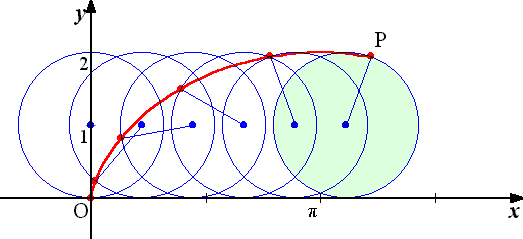

See
example of the movement of the pendulum constrained to a cycloid curve
| The not so simple Galileo's pendulum. Two pieces in wood, metal, or plastic shaped in the form of a cycloid may be inverted to form a cusp, between these sides a simple pendulum may be made to oscillate with a cycloid path with a large or small amplitude (Fig. 24. Direct comparison with the added simple pendulum of the same length but without the cycloid attachment shows that the span style cycloidal pendulum is isochronous, regardless of amplitude. On the other hand the simple pendulum period depends upon the amplitude of its swing. If both pendulums are swung through large arcs, the cycloidal pendulum gains on the simple pendulum.
|
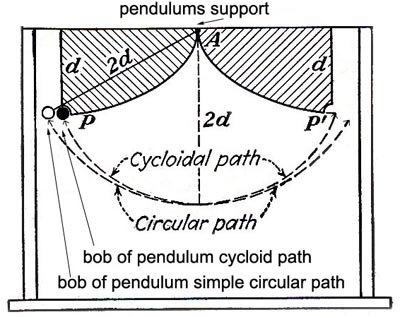 |
The following site gives a mathematical derivation of the cycloid; http://mathworld.wolfram.com/TautochroneProblem.html http://mathworld.wolfram.com/Cycloid.html
|
|
Building an Apparatus to Demonstrate Some of the Properties
of the Famous Cycloid Curve |
This instrument is in the Museum of History of Science of Florence Italy (inv. 969) We made some alteration to this design. They are listed below. http://brunelleschi.imss.fi.it/genscheda.asp?appl=LST&xsl=approfondimento&lingua=ENG&chiave=704014
|
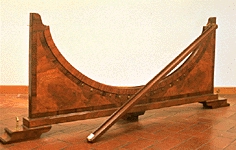 . . |
|
To demonstrate the above properties of a cycloid we built an apparatus that consists of two cycloid tracks and an adjustable incline plane. The two tracks for the cycloid demonstrate the tautochronous effect: two balls falling from different heights down each track will arrive at the bottom at the same time. The combination of a cycloid track and the incline plane demonstrate the brachistochronous effect: for two balls falling from the same height on each, the ball falling down the cycloid will reach the bottom of the curve before the ball falling down the incline plane even though the ball falling down the plane travels a shorter distance. |
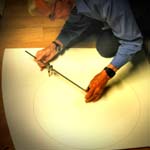 |
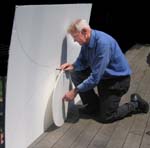 |
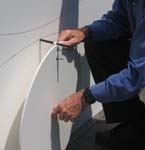 |
| Step
one: making a cycloid generating wheel cyc1.jpg |
Step two: generating
a cycloid curve cyc2.jpg |
Close up of
step two cyc3.jpg |
 |
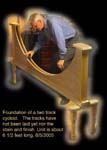 |
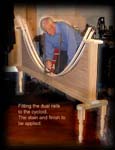
|
| Cutting out
the cycloid curve on two sheets of furniture grade plywood that have been temporally fastened together cyc4.jpg |
legs have been
added and The first rough tests are under way. cyc5.jpg |
Adding the two
tracks cyc6.jpg |
|
Below; The bottom line!
Below a 56 sec video showing the tautochronous nature
of our cycloid shaped rail apparatus. Below a 46 sec video showing the brachistochronous
nature of our cycloid shaped rail apparatus.
8/11/2005
|